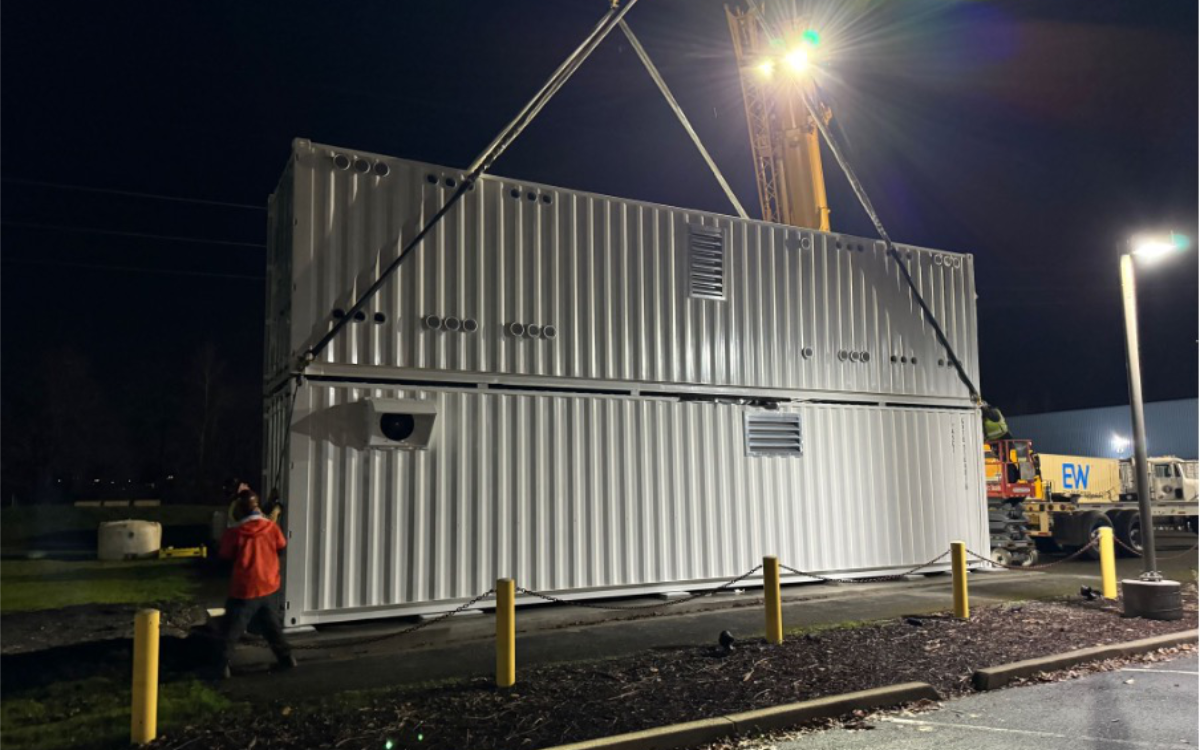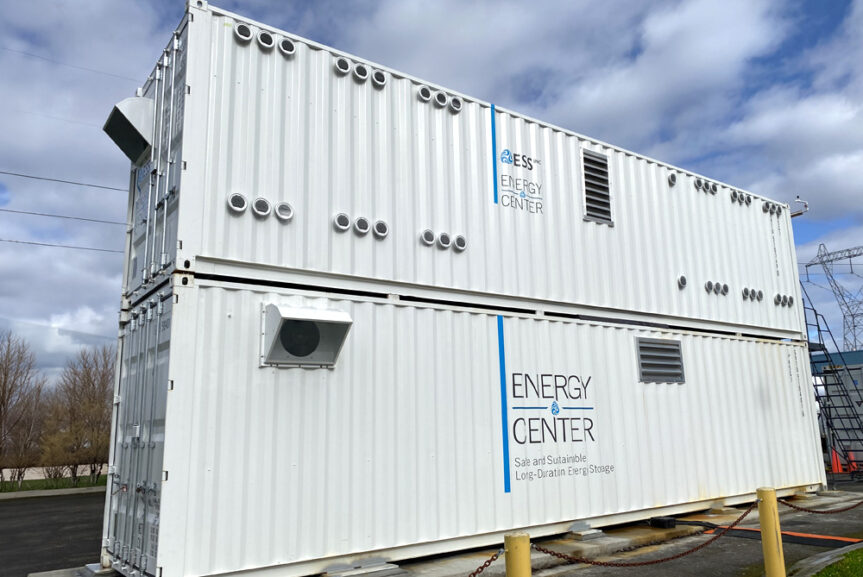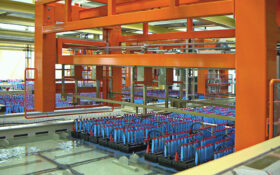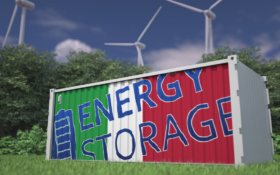Long-duration energy storage (LDES) will be needed to help decarbonise electricity grids. Market mechanisms are not properly in place yet. Andrew Draper met with Alan Greenshields, Europe director for flow battery company ESS, to learn more about its approach.

Decarbonisation of energy demands long-duration energy storage (LDES) as a solution, according to flow battery company ESS. The UK government has also embarked on a consultation to design a policy framework to enable investment in long duration electricity storage. Analysts say the technology is some way from being ready and there is a lack of market mechanisms to make them profitable.
Greenshields said, around the world renewable energy is converged on roughly 30% renewables and 60% on gas. “And long duration storage is about: if you’re going to decarbonise, you’ve got to replace the gas with something else,” he said.
It means more than making incremental change from whatever has been done with lithium batteries. “It’s actually a different function in the grid because, predominantly, the batteries deployed so far are principally stabilising a grid if you add lots of renewables to it.”
In Germany, ESS has signed a memorandum of understanding (MoU) to supply a 50MW/500MWh battery system to power company LEAG at what will be Europe’s largest ever clean energy hub in eastern Germany. It is set to replace a coal-fired power station and could produce up to 7% of all of Germany’s power needs, according to the company. The country has ordered an end to burning coal by 2038. The vast amounts of land owned by the company will be converted to renewable energy generation.
Not investing in gas turbines
“They’ve made the decision to not invest in gas turbines,” said Greenshields. “Even though they’re very familiar with them. They actually operate gas turbines already, but they’re saying if we’re going to provide 24/7, green baseload, you need to use storage technologies, which are carbon free. And at the site of what were formerly large coal generation plants, they’re installing an energy hub, which combines exactly these three elements: short-duration storage, long-duration storage and hydrogen as a system. I think it’s a very bold and praiseworthy move.”
Greenshields said the German market is more complicated because the government has had to backtrack on a plan to replace coal and nuclear with gas, and then replace natural gas with green hydrogen. This is, he said, “basically throwing the ball into the long grass, because whether high green hydrogen will be either cheap or plentiful, is still open at the moment.”
Throughout continental Europe, the model has been to introduce hydrogen, he noted. “The problem is that hydrogen is a lot more costly, a lot more difficult to transport and a lot of other practical issues, like, at this point in time, nobody can actually get set to sell you a pure hydrogen gas turbine, because it’s difficult. This is not criticism. It’s just saying that the realities of actually doing it are hard.”
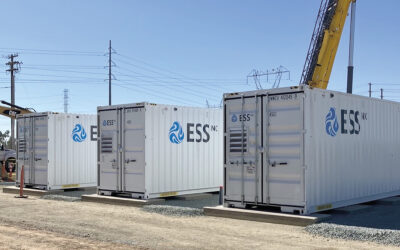
Transmission capacity is limited and permitting takes a long time to obtain, he said. “People often ask about competition, clean technologies, and whether I’m scared of that and I say no, I think it’s a wonderful thing. Because the answer is, anyone who produces a commercially viable energy storage system of any description, we need all of them. All of them.”
He notes that energy density is greater in lithium than flow batteries, but flow batteries contain no flammable material so can be stacked.
In a policy consultative document on LDES published in January, the UK government’s Department for Energy Security and Net Zero said LDES is a key enabler of a secure, cost-effective and low carbon energy system.
Cap and floor scheme
It proposed a cap and floor scheme for LDES. Much of the flexibility and stability in the current system is provided by fossil fuels, as operators turn coal or gas-fired power stations up down. “In the future, we need an energy system that matches new sources of demand to renewable generation by using low carbon flexibility across the system,” it stated. Electricity storage can help balance the system at a lower cost and either defer or avoid costly network upgrades and new capacity.
The government recommended the development of a cap and floor mechanism similar to that for interconnectors. It said it was “the most appropriate policy to meet our public commitment to enable investment by the end of 2024.”
Such a scheme would guarantee income to private investors with a reassurance of a return on their stake, as shown in the interconnector scheme. It could be a low-cost option if the floor is met and no top-up is provided, according to the report.
The government believes the scheme could be delivered in a timescale to allow it to meet its 2035 power sector decarbonisation targets.
In 2022, the government identified barriers to implementing LDES. They included:
- high upfront capital costs
- long build times
- lack of a track record of the technologies
- lack of revenue certainty
- lack of market signals.
The consultation acknowledged the risk that by supporting LDES with investment support, an uneven playing field might be created for storage technologies, which may hinder the development of new storage technologies and slow the deployment of storage generally. Reducing the effects of the free market and competition could lead to a reduced deployment of lithium-ion battery energy storage systems (BESS), it said.
The UK’s planning pipeline has at least 35GW of BESS either at planning or construction stage.
Europe on the brink of a surge
A report from UK-based Aurora Energy Research in February stated Europe is on the brink of a significant surge in grid-scale BESS, with forecasts pointing to a seven-fold increase in capacity by 2030. It noted that as the cost of long-duration battery storage declines, these balancing services are likely to become more attractive revenue streams.
Eva Zimmermann of Aurora told BEST there is “very little in the pipeline” in Europe with longer storage duration. “However, even within this storage class, we see a clear trend towards longer durations. This is driven by increased volatility on wholesale power markets, which lead to great price spreads that batteries with longer duration can capture better,” she said.
The economics of storage with four hours or longer duration is not good enough yet for merchant business models to work out for the most of Europe, she added. Zimmermann said support schemes can play a big role in making LDES profitable, however.
“For example, in Italy the MACSE auction mechanism mostly targets eight-hour storage duration. Therefore, it is the only country which we see with batteries of such large storage duration currently in the pipeline. However, recent developments in Germany’s power plant strategy (Kraftwerksstrategie) and LDES-specific auctions in Great Britain could open a door for LDES in these markets.”
She said the political support will make or break the business case, so it is very much dependent on the technology and the country. “It is going well for eight-hour batteries in Italy, but the German proposal on LDES hasn’t been more than one paragraph mentioning the introduction of a support scheme.
“In the UK, new LDES technologies have won tenders. However, everything is still in the very early stages. Based on this, I would see potential but would still be cautious as LDES is still far behind the maturity of the shorter duration storage market.”
Low readiness level
Iola Hughes, head of research at consulting company Rho Motion said the readiness level for LDES is still quite far away.
She told BEST: “What we’re dealing with is technologies which aren’t quite ready yet, but then also a lack of market mechanisms that will make them profitable. So the mechanisms don’t really exist right now for long-duration storage assets to be profitable. They typically have a high up-front cost for installing or building out these projects. And what that means is that there’s a lack of investment in the industry and things are still very early stage.”
Funding and government support is positive for the industry, she said. The role lithium-ion can play has been somewhat overlooked. “Historically, there has always been this view that four hours is kind of the upper limit for lithium-ion batteries. But we increasingly see that’s not the case anymore. We have a database which tracks all the grid storage projects globally and it’s not uncommon now to see lithium-ion projects with 10-hour duration.”
The technology is also improving, she said, with cell manufacturers actually designing cells specifically with long duration storage in mind. A standard long duration storage LFP cell is going from 280Ah up to 1,000 Ah, she said. That means reduced cost from having fewer cells. “Really the barrier to longer duration lithium-ion systems is the cost issue. So by using these larger cells, they’re really kind of targeting longer duration systems and making that more affordable. So there’s a lot of work going on to there, make lithium-ion suitable for long duration.”

